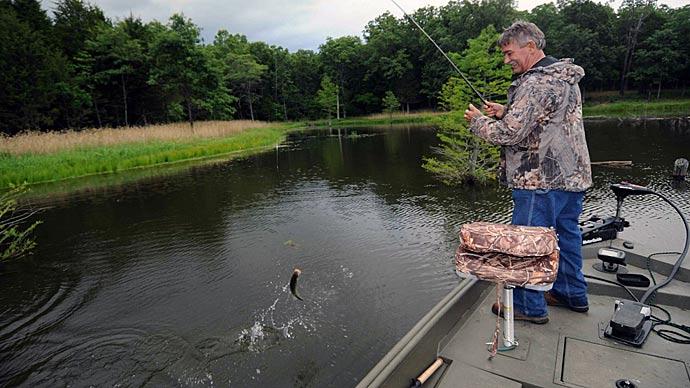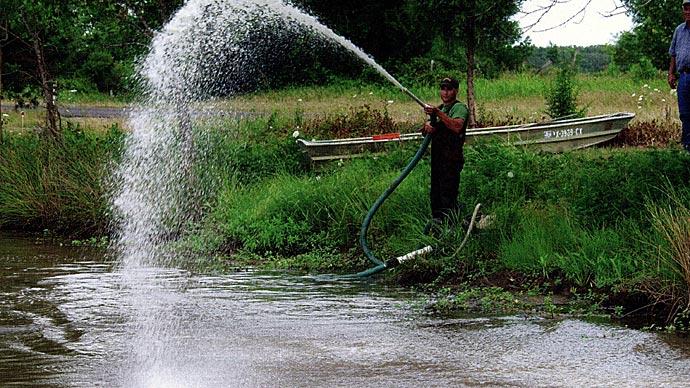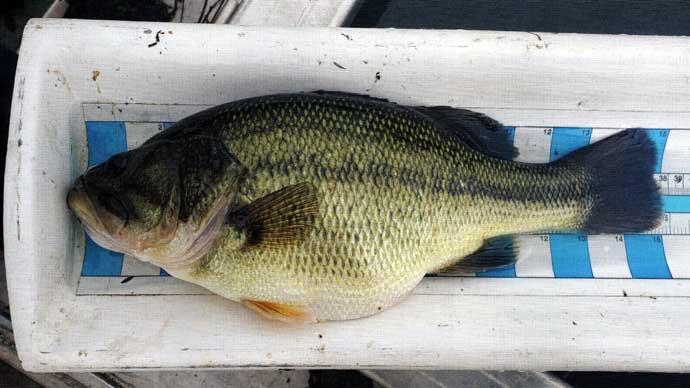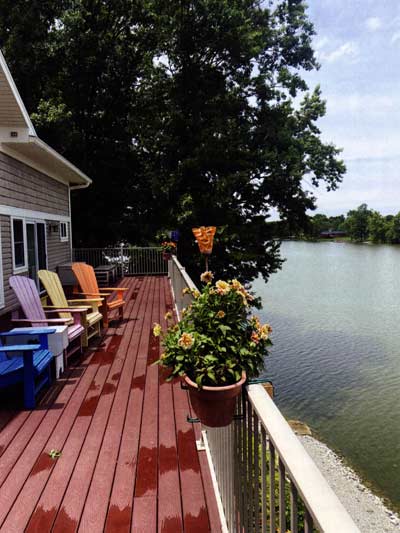
When the general public hears the term "HOA," they tend to roll their eyes or at least have some sense of cautious apprehension and skepticism. After all, when the general public hears about a homeowner's association, it's usually because of something less than good. Maybe something makes the news about a weird occurrence or some ruling with which a disgruntled member takes issue. That member doesn't get what they want and takes it to the press for attention, revenge...or to seek a different outcome through the power of the press.
HOA members typically see their association as a necessary entity to help manage the affairs of that exclusive community. They tend to be on guard against over-policing their beloved neighborhood, but they generally appreciate their HOA.
Those in the know realize that the best vehicle for making big things happen is through their HOA, especially when the membership approves.
HOA's still tend to have a "love-hate" relationship with their membership.
It seems that a working HOA is similar to lake management...both are a balancing act.
Lake management service providers often see HOAs in a totally different light. They want to deal with one person, the decision-maker, such as the community manager, not everyone on the fishing committee, or even have to listen to all the opinions of the lake committee.
Heck, most homeowner associations don't have committees until there's a need.
Especially when it comes to lake management.
A lake or fishing committee usually comes to be because several concerned individuals see a need. It may start as a problem, such as too much plant growth around some member's dock. Or, maybe there was a fish kill, and no one knows why. Or, maybe it's because someone used a chemical to take out some plants under his boat house to keep that junk from wrapping around his boat prop. Another reason is to help figure out how to care for infrastructure such as docks and boat slips. Safe water quality is still another.
When these committees meet, begin to devise a plan, have vetted the different consultants, experts, and lake management companies, and are preparing to make a recommendation to their board of directors, the vendors are often at the mercy of a board or committee, which completely changes every three years. Once they land the contract, the new vendor finds themselves "training" new board members or the committee chairperson every few years because that's how long it takes a board member or committee chair to get fed up with it and pass the baton.
From the committee's standpoint, they must undergo a steep learning curve to determine the best methods to accomplish committee goals, devise a plan for the board to approve, explain how it benefits the overall community, and be persuasive about the cost.
That's not an easy task.
For these committees, figuring out how to manage their lakes and ponds can be daunting.
They don't know what they don't know. They are volunteers. Most are retired or semi-retired, looking to do something meaningful and helpful for their communities.
When these committees, with the tentative blessing of their board of directors, begin due diligence to figure out how to improve their lake, they quickly discover just how confusing this lake management stuff is.
Who do they call? What do they ask?
They'll spend plenty of time on the World Wide Web's University of Google. One question leads to another, which leads to another, which leads to a multitude of different answers to each question.
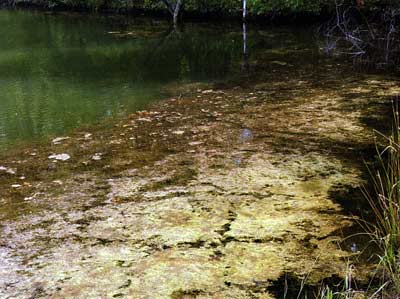
Then, the phone calls begin. The caller, in the beginning, really doesn't know what to ask. They'll start by trying to explain what they perceive as the "problem."
The seasoned consultant often takes the question at face value and then goes through their initial line of questioning, kind of like a script. The pro asks questions, many of which the committee member can't answer. It's another classic example of "we don't know what we don't know."
At this point of fact-finding, these engaging committee members, with their fresh enthusiasm and energy, quickly figure out there's way more to managing a lake than they ever thought possible.
Start with goals. Have you heard that before? That rests on the shoulders of the HOA and the committee involved, which is doing the due diligence. With tangible goals, discussions become much more fruitful.
Figure out the working budget for the committee. In the beginning, the budget is often small because people don't realize the cost—or the value—of managing their lake or pond.
Decades ago, I worked with a homeowner's association with 800+ homes around a 600-acre lake. Over six or eight years, the lake became overwhelmed with a plant called coontail. The phone rang; I responded and met with the chairman of the fishing committee and the community manager. We talked about it and decided it was wise to quantify the coverage area of that rapidly growing plant. I gave them a quote to get in a boat, with maps in hand, and spend a couple of days drawing the coverage areas on the map.
There was no money in the budget to pay me. Not an extra dime for the lake in the multi-million-dollar budget. There was an excellent budget for the golf course, the country club, security, road maintenance, and all the other stuff. But no one ever thought about spending a dime on the lake...until now.
The committee chairman said he'd pay the fee out of his pocket, so we were in business. Part of the stimulus to take action was numerous members complaining they couldn't get their boats out of their boathouses due to the thickness of the coontail. Local realtors working in that gated community were even complaining to the board because home prices had dropped. After all, accessing the lake from private boathouses was pretty much gone.
After mapping the lake, we discovered that 60% of its surface was covered with plants. Every cove, all the perimeter, and some of the open water were mainly covered.
The 40% that wasn't covered was the deeper area in front of the dam.
Next, I sat back down with the committee chairman and several committee members and looked at the different options. The committee decided to go to the board with a game plan costing around $40,000. It was a multi-pronged attack using triploid grass carp and spot-treating with herbicides.
The board voted to charge a special assessment to the membership. Those who didn't live on the lake protested it, but those with boathouses wholeheartedly—and begrudgingly—approved of it.
I recently spent time with a committee chairman for an association on a beautiful lake in Kentucky. Several years ago, that lake was invaded by Eurasian watermilfoil.
It took less than three years to grow invasively enough to clog critical parts of the lake. The entire budget for that particular HOA is less than $40,000, so you can imagine how big the lake management budget is.
This neighborhood is much smaller than the one in Texas, but so is the lake.
Committee members for the Kentucky community would love to grow bigger fish, improve fish habitat, and ensure aquatic plants stay where they are. But, forgive the pun, they have bigger fish to fry. They monitor water quality, especially because people swim in the lake almost every day in the summer. People kayak, go fishing, paddle around, and enjoy this lake.
The most significant push right now is keeping the water healthy, managing the infrastructure, and making sure the dam is safe. The volunteers are willing to do any fisheries work...and spend. A meager budget is reserved to buy fish (which they may or may not need).
They don't have a budget for much more.
That's partly why it was frustrating when the committee chair called a lake management company, and the first recommendation was to create a bathymetry map of the lake for a mere $35,000. The chairman didn't mention their budget, and the first line of defense for the lake company didn't think to ask.
That conversation didn't help either one. Each now pretty much disregards the other.
Here's the drill.
Whether you're a committee member, the chairman, or a committee of one for your lake, find your starting point. If you are seeking help for your lake, start with goals. Do that every time, and as you drill down into the "problem," the goals will help define the solution...or solution options.
Next, have an idea of your budget. When you pick a number, add 25% more because you "don't know what you don't know."
That at least gives you a starting point.
When calling companies, consultants, or pros, remember that their job is to help figure out how to solve your problems.
Remember this as well. What you perceive as the "problem" is not truly likely to be the problem. Your perception is likely a symptom of the problem...the sneeze rather than the disease.
The journey through this process is to determine cause and effect, assess the circumstances, and then devise a protocol that fits your budget.
Look at it like a wedding. If you want a happy marriage to start, each side should have a say in the costs.
If what the lake needs doesn't fit the budget, go get more money or consider waiting until the budget can be enlarged unless there's a dire reason not to.
Most of the time, not spending enough money creates a bigger problem. Consider it like putting a band-aid on a gash that needs many stitches.
This is another hint for all of us—especially those HOA's out there. Look around enough to find the best company—better yet, the best representative of that company—who has empathy for what is needed, will represent themselves to help educate your committee members and the board of directors as necessary and has the wherewithal and reputation to fulfill your management strategy and then communicate properly so the members can understand what's happening.
And when you find the best one for your situation, don't change it every three years because the board changes.
Like a famous football coach once said, "You need to dance with the one what brung you." When you build a relationship with your consultant, lake pro, company... whatever, work hard to communicate and understand what each one wants and how you get there.
The dance will be much more fun and productive if you do that.
Reprinted with permission from Pond Boss Magazine

